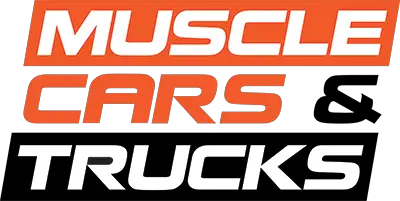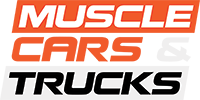What Is The Hellcat Engine?
Introduced in 2014 as a message to the Ford Mustang and Chevrolet Camaro, the Dodge 6.2L Hellcat V8 engine was a marvel from its beginning. Engineers were tasked with needed to create new engine dynamometer test cells for the engine because of its airflow capabilities. The first engines tested before the test cells were created were just over 600 HP, forcing them to upgrade the test cells just to finish developing the engine. Eventually, over 700 horsepower was achieved. And today, the Hellcat V8 can be found across the Dodge lineup in the Charger SRT, Challenger SRT, and Durango SRT. It can also be found in the Ram 1500 TRX.
The 6.2L Hellcat V8 is architecturally similar to the naturally aspirated 6.4L Apache V8 found in the Scat Pack Dodge Charger and Challenger muscle cars (as well as the Durango SRT 392 and Jeep Wrangler 392), but 91% of the engine’s components are different. The biggest of the changes being the 2.4L supercharger affixed atop of the manifold. Cast iron was used for the block over aluminum because aluminum raised questions about durability and costs. Iron has superior strength and won’t succumb to flex under high load situations. Making just over 11 PSI from the factory, the supercharger helps the hellcat achieve its staggering 707 horsepower. Integrated in the supercharger are two intercoolers that are linked to the low temp cooling system of the car. Keeping the air charge cool is imperative to the performance of the engine. The cooler the air charge the more dense air the supercharger can cram into each stroke of the engine. The supercharger doesn’t come without any drawbacks, it requires about 80 horsepower to drive it at 6000 rpm.
With the addition of boost to the engine, components needed to be upgraded to be able to withstand the forces being emitted though the engine when you push your right foot to the floor. 21,000 lbs of load is on top of the pistons on every firing event from the engine. To be able to withstand that kind of abuse the pistons come forged from the factory with diamond like carbon coating on the piston pins. Unlike other engines from FCA the crankshaft is induction hardened and the to transmit all the force from the pistons to the crankshaft the connecting rods are forged as well.
With all this boost being pumped into the engine oil had to be addressed to keep things cool. A
high-flow oil pump was added along with piston squirters to keep the pistons cool. Fueling with this much power was something that required some attention as well. 600cc injectors were fitted to the engine. Finding injectors that were properly sized to idle well, while being able to produce enough fuel at high rpm proved to be a task for engineers. Management of fueling to the car is done by both speed density and mass airflow calculations. Air is brought in by two sources, one in the grill as a fake light and the other at the bottom of an underhood filter housing. Speed density measures the temperature of the incoming air charge just before entering the intake manifold while the mass airflow sensor measures air as it comes in the air intake. Direct injection was considered but a lack of sufficient flow high pressure fuel pumps existed. To ensure the engine has met quality standards each engine it run for 42 minuets prior to leaving the factory. A special cycle was created to break each engine in the same way every time. 90% load is achieved to ensure that a quality product is being delivered.
Making sure all this power makes its way to the ground you have a choice of an 8 speed automatic and a 6 speed manual. The torqueFlite automatic has been strengthened by 30% to be able to withstand the power from the supercharges 6.2L. Extra friction discs in the clutches, extra pinions and wider gears allow the 8-speed to take the abuse. With the manual transmission, engineers just went straight for the Vipers 6-speed transmission. Even so, the 6 speed transmission from the 8.4L Viper needed some help in the cooling department with the addition of an oil cooler to circulate oil to an external heat exchanger to keep temperatures in check.

Specifications
Horsepower: 707@ 6,000 RPM (2015-2019 Challenger SRT Hellcat, 2015-2020 Charger SRT Hellcat, 2018-present Grand Cherokee Trackhawk)
717 hp @ 6,100 RPM (2020 Charger Hellcat 50th Anniversary Daytona Edition, 2020-present Challenger Hellcat, 2021 Charger Hellcat, 2021 Durango Hellcat)
Torque 650 lb-ft @4800 RPM
90-degree
Block: 90-Degree pushrod V8
Bore: 103.9 mm
Stroke: 90.9 mm
compression ratio: 9.5:1
fuel cut (max RPM) 6,200 RPM
fuel type (reg/med/prem/race) 91 premium
firing order?
Material composition of the valves, crank, pistons, block, and manifolds (if possible)
Crankshaft: Forged steel with induction hardened bearing surfaces
Rods: powder-forged connecting rods
Pistons: Forged aluminum pistons
Intake valves: 54.3-mm, hollow stem
Exhaust valves: 40.0mm, hollow stem, sodium filled
Heads: A356 aluminum
Water cooled, 15 quarts
Battery
Lubrication system
Oil capacity: 7 quarts
Oil type: MS-1263, 0W-40
Transmissions
Tremec TR-6060 six-speed manual transmission
ZF/TorqueFlite paddle-shifted 8HP90 eight-speed automatic
Fuel System
Tank size: 18.5 gallons Dodge Cherger/Challenger, 24.6 gallons Jeep Grand Cherokee
Injectors: 600 cc/min
Crate Engine Availability: Yes
6.2L Supercharged Engine: $20,020.00
Performance And Fuel Economy:
Hellcat Redeye
Horsepower 797 @ 6300 RPM
Torque 707 lb-ft @ 4500 RPM
0-60 3.7sec
1/4mile 11.8 @ 125mph
Automatic
Highway 22mpg
City 13mpg
Manual
13 city / 21 highway
Charger Hellcat
Horsepower 707@ 6000 RPM
Torque 650 lb-ft @48000 RPM
0-60 3.4 sec
¼ mile 11.4 sec @ 128 MPH
Highway 22mpg
City 13mpg
Trackhawk
Horsepower 707@ 6000 RPM
Torque 645 lb-ft
0-60: 3.5 sec
¼ mile: FCA claims 11.6 but can’t find mph with that. Motor trend is 11.7 @116.2mph
Towing- 7,200 lbs




